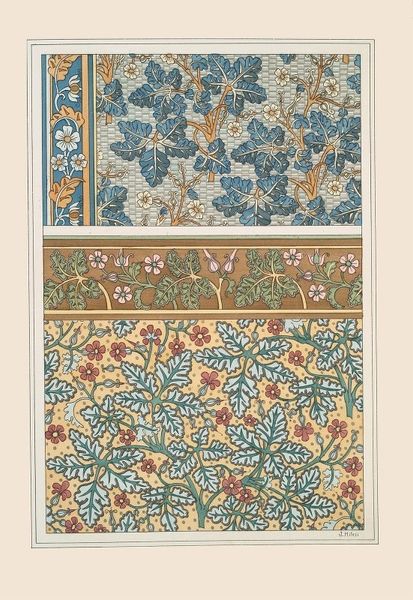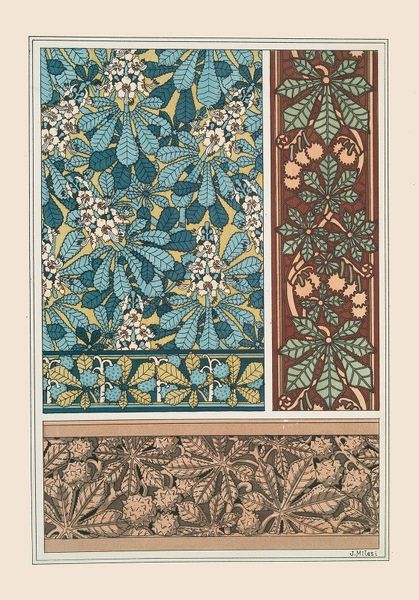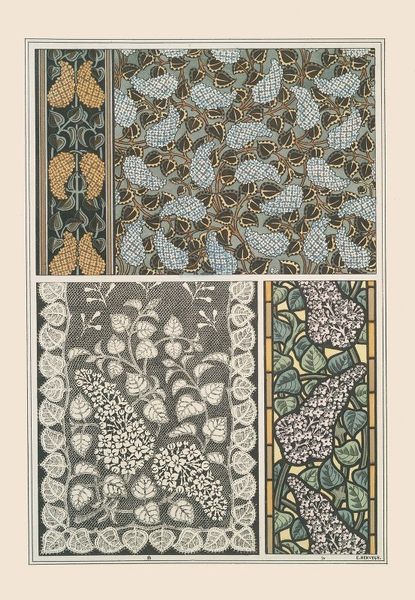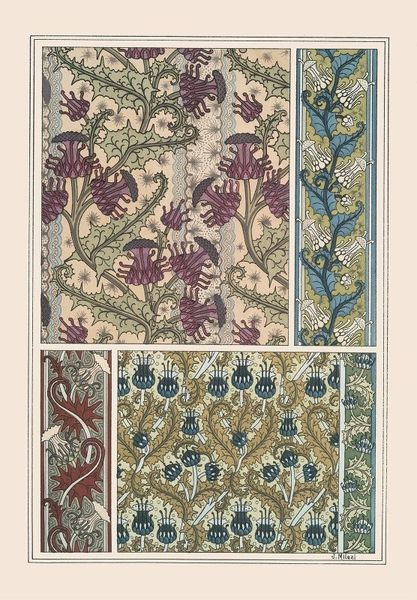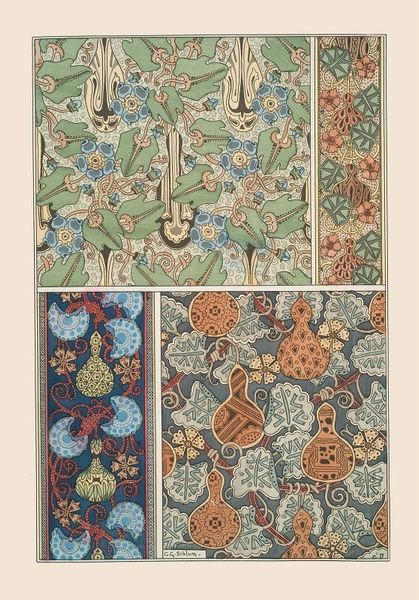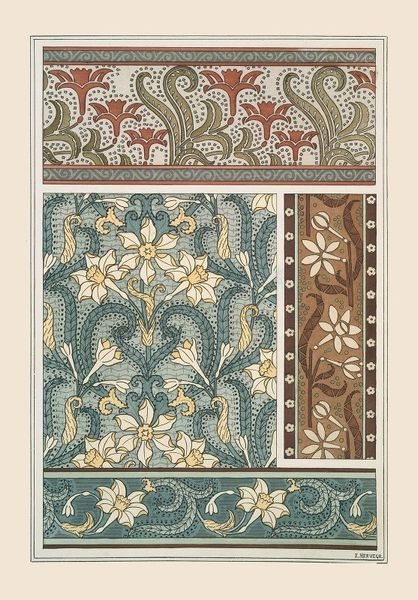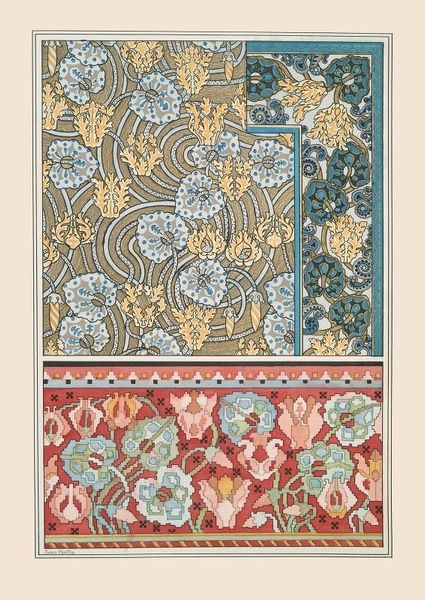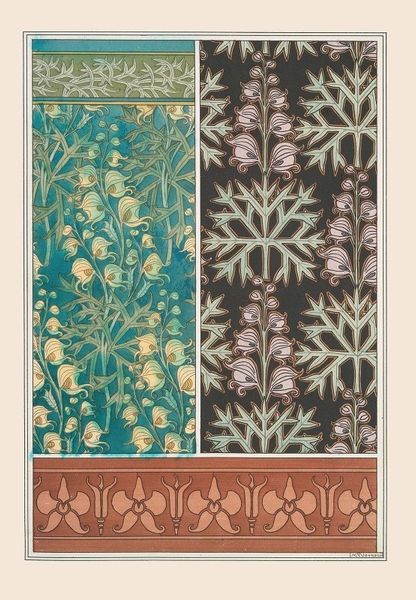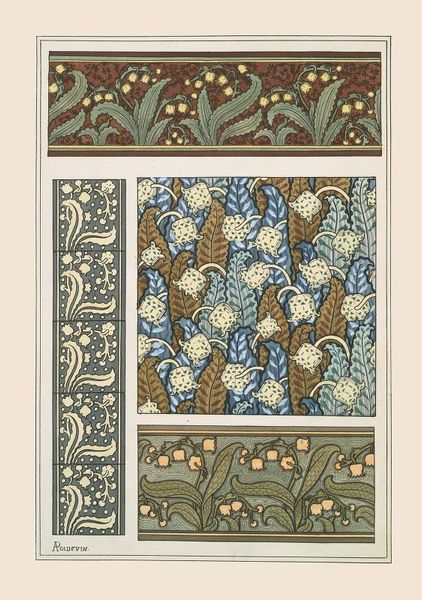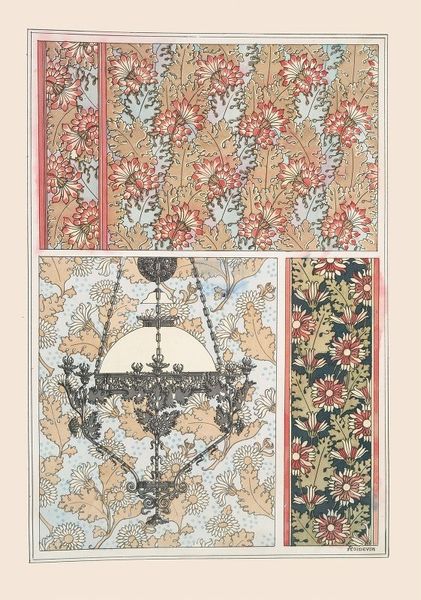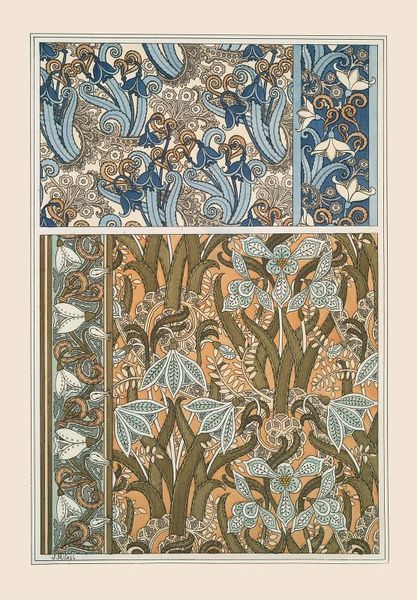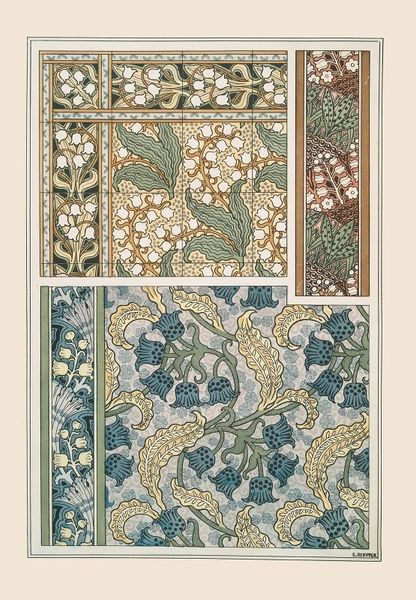
drawing
#
drawing
#
art-nouveau
#
textile design
#
decorative-art
Copyright: Public Domain: Artvee
Curator: It strikes me as utterly mesmerizing—the way these individual blocks form such a rich and cohesive pattern. Editor: I agree, there is something particularly compelling about the arrangement. We’re looking at “Aconit 3,” created by Maurice Pillard Verneuil in 1896, which presents different aconite-inspired patterns utilizing mixed media on paper. Its integration of nature, a key feature of Art Nouveau, offers various perspectives on the design’s origins. Curator: I am intrigued by the multiple applications the artwork offers! What stands out to me is the implicit connection to textile design and interior decor, pointing to Verneuil’s understanding of mass production in his time. The level of detail in the pattern, the intentional color palette—everything screams careful planning geared towards industrial applications. Editor: I find that connection quite relevant. In looking at Verneuil's work through a social lens, one sees the intent to democratize art. It’s a commentary on who gets to access beauty, challenging the hierarchical constructs of "high" versus "applied" art prevalent then—and now! It allows for critical interrogation of these values in contemporary practice. Curator: Indeed! By breaking away from the traditional notion of an "artist's canvas," Verneuil engages with production itself as art, disrupting preconceived notions of artistic merit. How the artwork will affect consumption is carefully considered. Editor: And think of the historical context here. We’re in fin-de-siècle France, amid shifting social and economic landscapes. Verneuil is actively inserting these designs into the domestic sphere, engaging with the era’s fascination with botany and ideas surrounding art for art's sake. His art serves both to beautify living spaces and comment on society's evolving sensibilities. Curator: Ultimately, “Aconit 3” is a window into how materials, when thoughtfully applied to reproducible design, blur the lines between commerce, labor, and artistic production. Editor: I’ll carry that thought with me, thank you! What strikes me most profoundly is the work’s challenge to accessibility of artistic expression beyond privileged gallery walls, allowing me to reflect on who and what our modern aesthetics uplift.
Comments
No comments
Be the first to comment and join the conversation on the ultimate creative platform.
